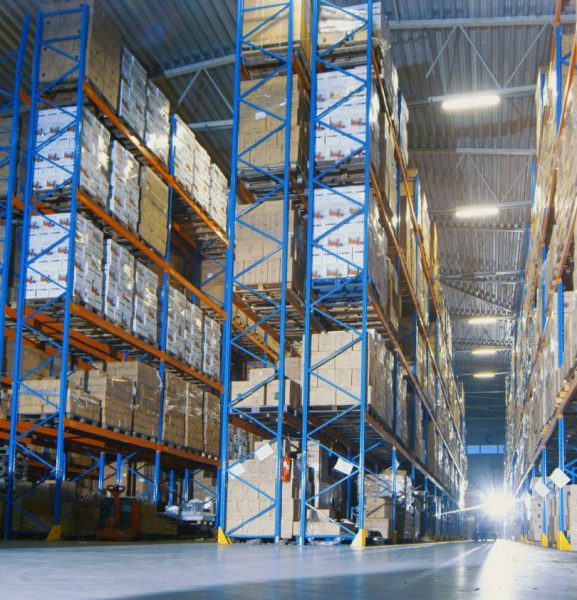
SAS empowers modern demand planners with AI-driven tools like SAS Visual Forecasting and SAS Intelligent Planning to meet rising customer expectations through accurate, responsive, and scalable demand planning solutions.

SAS empowers modern demand planners with AI-driven tools like SAS Visual Forecasting and SAS Intelligent Planning to meet rising customer expectations through accurate, responsive, and scalable demand planning solutions.

Let’s face it, supply chains today can feel like one headline away from chaos. Whether it’s new tariffs, labor strikes, warehouse fires or unpredictable weather patterns, retail and consumer goods companies are constantly juggling curveballs. Each disruption comes with a price: tighter margins, out-of-stock products, unhappy customers and many operational

To stay ahead, organizations must thrive rather than compete. Demand forecasting is one of the most critical tools in this pursuit. Organizations that excel at demand forecasting have a clear edge, whether anticipating customer needs or managing supply chain disruptions. By predicting what customers want and when they’ll want it, companies can

Retailers face unprecedented challenges with supply chain volatility, inflation, oil price fluctuations, labor shortages and geopolitical activities, making it difficult to plan across the organization. With retail evolving, coupled with persistent supply chain issues, this adds complexity to anticipating and planning for shifts in consumer demand. The emergence of an

As the holiday season approaches, businesses may be bracing for what’s been all too common in recent years – supply chain disruption. Retail and consumer goods industries have been hit with disruptions from every direction: profound shifts in consumer preferences, materials shortages, weather events, and geopolitical activities, to name just

データサイエンスの使いどころ・・・攻めと守りの圧倒的な違い 以前のブログで、データ活用における攻めと守りについてお話しました。今回は小売業を例に多くのデータ活用プロジェクトが陥りやすい罠と、真の目的達成のための方法についてご紹介します。 小売業の目的はもちろん他の業種企業と変わらず、収益の最大化です。昨今データ分析を武器として売り上げの最大化、コストの削減、業務プロセスの生産性向上を目指す企業が増えてきています。時には、データサイエンティストが、データサイエンスを駆使してプロジェクトを実行しているケースもあるでしょう。 ここで、今一度現在取り組んでいる、またはこれから取り組もうとしているデータサイエンスやAI活用のプロジェクトがどんな利益を自社にもたらすのかを改めて考えてみましょう。昨今、需要予測についての相談が非常に多いので、ここでは需要予測について考えてみます。 弊社にご相談いただくケースの中で、少なくない企業が、需要予測をこのブログで言うところの「守りの意思決定」としてとらえています。多くのケースで、過去の実績をベースに将来の需要を予測することで、在庫過多や欠品を減らそうというプロジェクトに投資をしていたり、しようとしています。言い換えると、過去の実績を学習データとして、将来を予測するモデルを構築し、ひとつの将来の需要予測を作成し、それを在庫を加味したうえで、発注につなげています。 手段が目的化することで見失う可能性のある本来の目的とは 非常に典型的なAI活用、データサイエンス活用かと思いますが、実は、「AIで予測」、「機械学習で予測」といった言葉で最新のデータ活用をしているかのような錯覚に陥っているケースが見受けられます。数十年前から行われており、昨今でも同様に行われている、機械学習を用いた典型的な需要予測は、「守り」です。すなわち、どんなに多くの種類のデータを使うかどうかにかかわらず、過去の傾向が未来も続くという前提のもとに予測モデルを作成している場合には、あらかじめ定義した前提・業務プロセスの制約の下で、機会損失を最小化するために予測精度をあげているにすぎません。 つまり、そのような前提での需要予測は、小売業の収益向上という観点では、期待効果が限定的であるということです。では、最終的な収益の最大化を実現するには、何をすべきでしょうか? 収益を向上させるためにはもちろんより多くの商品を売ることにほかなりません。より多くの商品を売るためには当然、顧客の購買心理における購買機会に対して販売を最大化する必要があります。あるいは、顧客の購買心理そのものを潜在的なものから顕在化したものにすることも必要でしょう。つまり、販売機会を最大限に活用するということは、店舗中心ではなく、顧客中心に考えるということです。 小売業における攻めのデータ活用の1つは、品ぞろえの最適化 このように、顧客中心に考えることで初めて最適な品揃えの仮説検証のサイクルが可能となります。過去のデータは、単に過去の企業活動の結果であり、世の中の「真理~ここでは顧客の本当の購買思考」を表しているわけではありません。真理への到達は、仮説検証ベースの実験によってのみ可能になります。わかりやすく言うと皆さんよくご存じのABテストです。このような実験により、品ぞろえを最適化することで、販売機会を最大化することが可能なります。そのプロセスと並行して、オペレーショナルな需要予測を実践していくことが重要となります。 需要予測と品ぞろえ最適化の進化 昨今、AIブーム、データサイエンティストブーム、人手不足や働き方改革といったトレンドの中で、従来データ活用に投資してこなかった小売業においても投資が進んでいます。しかし多くのケースでこれまで述べてきたような守りのデータ活用にとどまっていたり、古くから行われている方法や手法にとどまっているケースが見受けられます。歴史から学ぶことで、無用なPOCや効率の悪い投資を避けることができます。今、自社で行っていることがこの歴史の中でどこに位置しているかを考えてみることで、投資の効率性の向上に是非役立てていただければと思います。 小売業におけるデータ活用のROI最大化にむけたフレームワーク SASでは長年、小売業や消費財メーカのお客様とともにお客様のビジネスの課題解決に取り組んできました。その過程で、小売業・消費財メーカー企業内の個々の業務プロセスを個別最適するのではなく、それら個々の業務プロセスを統合した、エンタープライズな意思決定フレームワークが重要であるとの結論に至っています。AIやデータサイエンスという手段を活用し、データドリブンな意思決定のための投資対効果を最大化するための羅針盤としてご活用いただければと思います。

"Demand planning is a team sport," says Davis Wu, Global Lead of Demand Planning and Analytics at Nestlé S.A. The team at Nestlé includes demand planners, demand analysts and data scientists, who all work together to ensure that Nestlé products remain in stock. Many demand analysts can be seen as

Cloud technologies enable greater access to analytics. The shift to providing less complicated usability empowers decision-makers and offers a competitive advantage previously unattainable. Companies of all sizes and sectors embrace cloud technologies to address data and information challenges. IT departments are short-staffed and expected to support a large and varied

You're not alone if you’re still seeing local grocery stores with empty shelves. Food shortages are still lingering in 2023. Increases in consumer demand, labor shortages and shipping capacity restraints continue to interrupt supply chains, particularly for grocery retailers. These problems have persisted throughout the pandemic, as seen with the shortages

Getting demand right – or getting it wrong – can have a significant impact on customer perceptions of your brand, particularly in this age of instant gratification. The need for agile, accurate demand planning has never been greater. Predicting forward-looking demand signals and shifting consumer demand patterns to recommend balanced, profitable commercial

Often the biggest challenge when implementing a successful forecasting process has nothing to do with the analytics. Forecast adoption – incorporating forecasts into decision-making – is just as high a hurdle to overcome as the models themselves. Forecasting is more than analytical models Developing a forecasting process typically begins with

In today's environment, data is exceedingly important but also increasingly harder to get and manage. A reliable customer data platform (CDP) can provide significant value to retail and consumer packaged goods (CPG) companies. Customer data platforms are used to consolidate and integrate customer and consumer data into a single data source. CDP

Retail expert Charlie Chase recently participated in a private unplugged discussion about disruption challenges with retail executives hosted by the Retail Council of Canada. All quotes have been edited for maximum clarity, and participants have been de-identified. The last two years have created a major disruption for retailers and consumer

Outliers provide much-needed insights into the actual relationships that influence the demand for products in the marketplace. They are particularly useful when modeling consumer behavior where abnormalities are common occurrences or unforeseen disruptions that impact consumer demand. But why do demand planners cleanse out outliers, when many are not really

Before the outbreak of COVID-19, demand planning hardly ever matched actual sales. But since the virus reached Europe, the level of sales in different product categories became even more difficult to predict. How could the garden centers have imagined that consumers would invest their money in a roof, pavement or

The past 20 months of disruptions caused by COVID-19 have been a wake-up call for retailers and consumer goods companies. Unpredictable market trends have caused havoc with categories, brands and products making it harder to predict supply requirements. All of these changes have given rise to the need for consumption

The social and economic impact of COVID-19 has dramatically affected supply chains and demand planning across all industries. Then there’s the Amazon effect, which has led to sky-high consumer expectations of the ordering and delivery process. Demand planners for retailers and consumer goods companies have quickly realized they have no

The need for agile, accurate demand planning has never been greater. When considering migrating your demand management application to a cloud-native solution, you might experience platform management challenges ranging from lacking the resources needed to oversee application operations, to manipulating maintenance tasks that may distract from growing the business. Why

Demand management concepts are now over 30 years old. The first use of the term "demand management" surfaced in the commercial sector in the late 1980s and early 1990s. Before that, the focus was on a more siloed approach to demand forecasting and planning that was manual and used simple

What if you had a technology solution that creates a real-time link between the customer demand signal and what's happening on the ground? What if plans that are being steered centrally could finally be connected to every shipping lane, while simultaneously, creating cost saving carrier adjustments? The first-of-its kind integration

Depending on who you talk to, you'll get varying definitions and opinions regarding demand sensing. Anything from sensing short-range replenishment based on sales orders, to the manual blending of point-of-sales (POS) data and shipments. But a key component for retailers and CPG companies is accurately forecasting short-term consumer demand to

The COVID-19 pandemic has revealed the vulnerability of pharmaceutical supply chains. Pharma companies are focusing on risk management to improve the resilience of their networks. Most of the measures they will take, including on-shoring, over capacities and redundancies, will lead to higher costs. To decrease inventory levels across these new

Intelligent Decisioning can help telcos adapt to disruption, meet new demands and plan for the future.

In many countries, retail has been right at the centre of the coronavirus storm. Some retailers – those selling essential goods – have been unable or barely able to keep up with demand. Other sectors, notably clothes and luxury goods, have seen a complete drop-off in demand. Some retailers have

Few of us expected to experience problems with retailers during the lockdown. Most people have, after all, been happily buying online for years. Why would anything change just because some physical shops closed for a while, or some people could not go out? However, the challenges went a bit deeper

Is it getting harder and harder to find empty Excel spreadsheets cells, as you run out of columns and rows? Do your spreadsheet cell labels have more letters than the license plate on your car? Do you find yourself waking up in the middle of the night in cold

Almost everyone enjoys a good glass of wine after a long day, but did you ever stop to wonder how the exact bottle you're looking for makes its way to the grocery store shelf? Analytics has a lot to do with it, as SAS demonstrated to attendees at the National

Just last week, Walmart announced that they'll be testing inventory management robots. These robots will cruise store aisles, scanning shelves to identify out-of-stock products and other issues. According Reuters, Walmart is testing these camera-equipped robots in a handful of stores, but plans to expand the test to 50 stores. We

Analytics-driven forecasting means more than measuring trend and seasonality. It includes all categories of methods (e.g. exponential smoothing, dynamic regression, ARIMA, ARIMA(X), unobserved component models, and more), including artificial intelligence, but not necessarily deep learning algorithms. That said, deep learning algorithms like neural networks can also be used for demand forecasting,

Omnichannel Analytics are helping companies uncover patterns in big data to improve the customer experience. Using those insights, companies can anticipate what consumers are planning to purchase and influence that purchase in real time. Companies are experiencing unprecedented complexity as they look for growth and market opportunities. Their product portfolios are